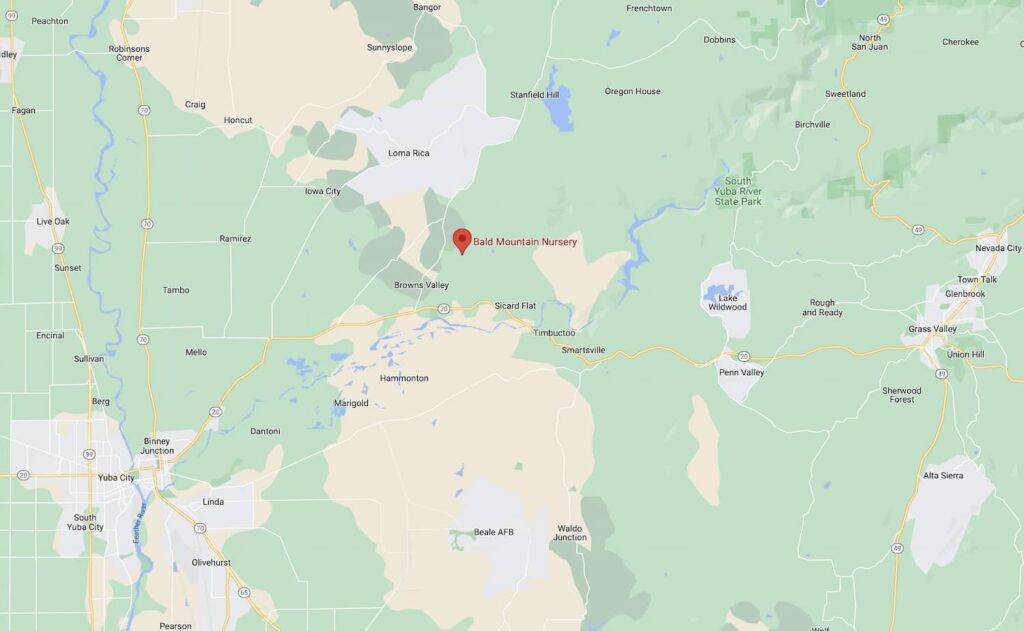It’s time to get ready to start fertilizing. Almost everything should be fertilized soon. As soon as deciduous plants have their full set of leaves fertilizing should be done I’ve actually done it in timing with the rain and had the rain water it in for me. If the rains time themselves right, it makes it easy. For most plants you should use a balanced fertilizer or an all purpose fertilizer. The three numbers will be the same such as 16-16-16 or 5-5-5 for organics. When fertilizing trees and shrubs apply the fertilizer at the drip line and work it into the soil. Make sure the plant is watered well before applying the fertilizer and water the fertilizer in after application.
We carry 16-16-16 in 20 pound bags. This year, like last year, we have balanced organic fertilizer. Dr Earth Life organic fertilizer is available in 25 pound and 4 pound bags. It’s formulation is 5-5-5. I used this last year on the orchard here at the nursery and it works really well. It is easy to use and the results I found were great. It also works well on container plants and raised beds. The 25 pound bag will cover 750 sq. ft. and costs $42.99. The 4 pound bag sells for $12.99. We also carry a full line of organic fertilizer for all other fertilizing needs.
Some plants need specialty fertilizers. Rhododendrons, azaleas, and camellias like acid fertilizers. Use a fertilizer that is labeled for them. When fertilizing these plants, you want to fertilize them 3 times after they are done blooming. Each fertilizer application should be 30 days apart after bloom. Then don’t fertilize them again for the season. If they are fertilized too late in the season, they tend to grow and not set blooms for the next year. Gardenias also like acid fertilizer but they do better with monthly feeding through the growing season. Another tip for gardenias; avoid getting water on the flower buds when watering. It tends to make the buds fall off and you get fewer blooms. Water them from the bottom of the plant and all the buds will bloom.
Citrus need to be fertilized with a citrus fertilizer. Most packages say to fertilize three or four times per year. We have found that doing it monthly during the growing season gives better results. Just make sure you reduce the dosage for monthly feeding if the directions are giving the dosage for quarterly feedings.
Roses should be fertilized monthly through the growing and blooming season. They are heavy feeders and perform best with regular fertilizing. Use a rose fertilizer. If you want to prevent the aphids at the same time, use a systemic rose food. It is also time to start spraying roses for fungus soon. If you start early and stay ahead of it, it is much easier than trying to catch up once the fungus has started. We use neem oil mixed with Monterey Horticultural Oil on the roses here. It works as an insecticide and fungicide. If done regularly it works very well and both are an organic fungicide/insecticide. If the fungus problems get severe a rose fungicide will usually take care of it better.
Watch for aphids. If you see them, start a control program early. Neem oil works well for aphids. Or you can use an insecticide. Beneficial insects released in the garden work too. We do not carry those but there are places to get them if you want to go that route. If you are going to apply an annual systemic treatment on your trees, now is the time to apply it. We carry Monterey Once A Year Insect Control. A quart is $10.25 and a gallon is $31.00. You use one ounce for each one inch of distance around the trunk measured at chest height. It is good for aphid control and borer control. It is not labeled for fruit trees. We highly recommend it for birch trees for borer control and for any tree which is subject to aphids. It is also excellent for controlling aphids on Crape Myrtle. A once a year application is all it takes. Easy to use. Mix it with water and pour it at the base of the tree. This product works really well!
We’ve had about 8 to 8.5 inches of rain with the past couple of rain storms. I’m hopeful that March will be fairly wet and help make up for the lost time of December and January. Long range forecasts I’ve looked at are promising. March can be very wet. It has happened before. Time will tell.
On the subject of rain, kind of, to conserve water in your landscapes, use mulch and drip systems. Two to three inches of mulch around your plants will stop evaporation and will greatly reduce the amount of water you use and still have very healthy plants. That and drip irrigating does save quite a bit of water. We are installing a drip system on the hillside we are landscaping. We have already mulched, and even through the dry January, we only watered twice. The ground under the mulch does not dry out very fast.
When you come in, be sure to take a walk through the hillside landscape and beautification project. It’s beyond the trees in our retail area and across a red bridge. It’s really pretty. We have benches to sit on where you can relax and enjoy the natural beauty. Large boulders and old oaks. We will be putting a picnic table there soon so maybe you can enjoy lunch. Although you would have to bring your own. But it is really nice and peaceful there. I usually end the day there and sit and contemplate.
Hopefully we see you soon.
Jeff

